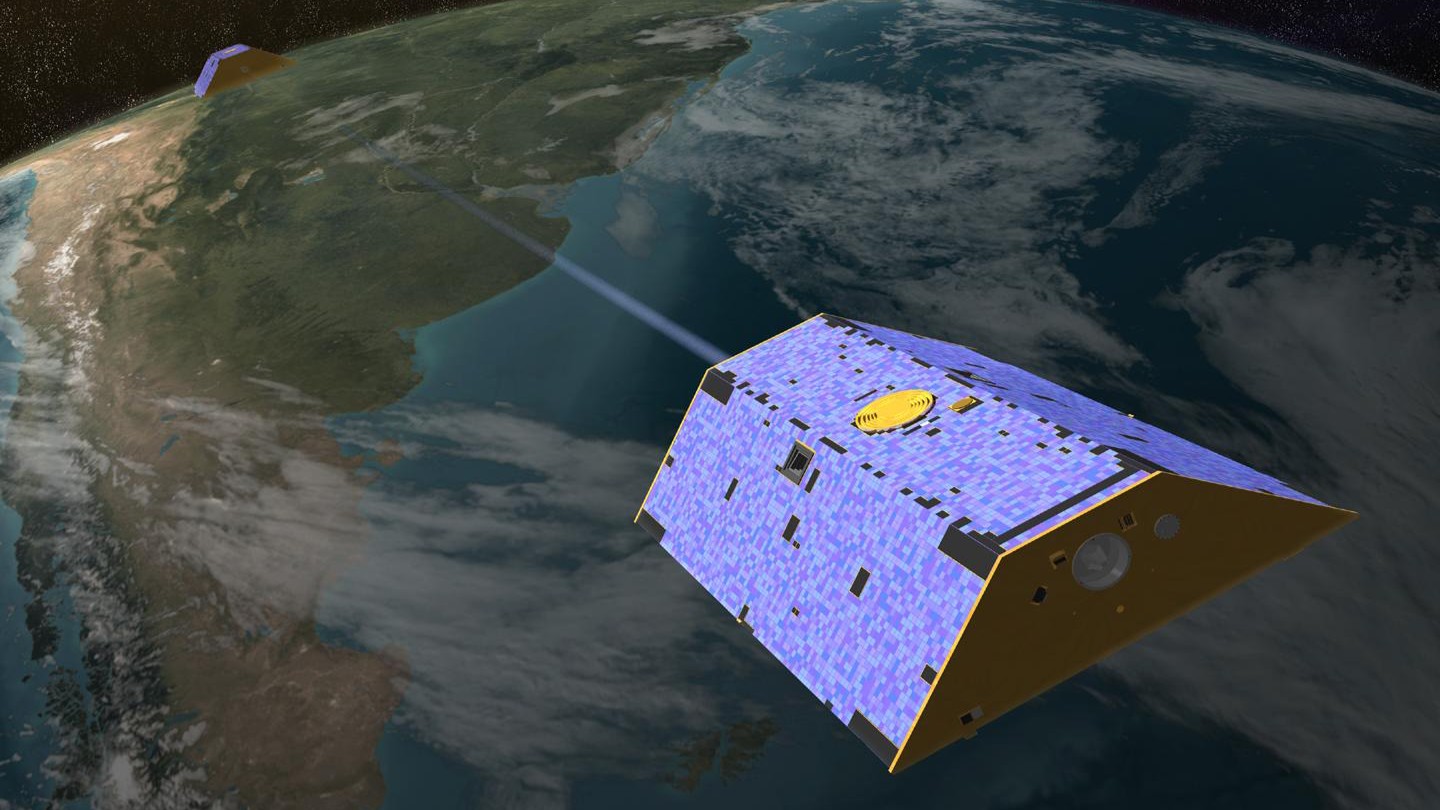Satellites detected strange gravity signal coming from deep within Earth almost 20 years ago, study reveals
Researchers have discovered there was an anomaly in Earth's gravitational field between 2006 and 2008, potentially caused by a mineral shift deep within Earth's mantle. GRACE satellites detected a strange gravity signal at the time.

Satellites detected a strange gravity signal off the coast of Africa nearly 20 years ago, suggesting something unusual had happened deep within the planet to distort its gravitational field, according to a recent study.
The large gravitational anomaly lasted for about two years over the eastern Atlantic Ocean. It peaked in January 2007, the same month Steve Jobs announced the first iPhone (though, of course, there was no connection between the two events).
Researchers recently discovered the signal while analyzing data collected by the Gravity Recovery and Climate Experiment (GRACE) satellites between 2003 and 2015. The gravitational anomaly happened around the same time as a geomagnetic "jerk" — an abrupt change in the variation of Earth's magnetic field.
The strange anomaly, and the jerk, were caused by a previously unknown geological process, the researchers suspect. Their findings, published Aug. 28 in the journal Geophysical Research Letters, indicated that a shift in minerals may have caused a rapid redistribution of mass in the deep mantle, near the core, altering Earth's magnetic field.
Study co-author Mioara Mandea — a geophysicist at the National Centre for Space Studies (CNES) in France and a principal investigator for the European Research Council's Gravimetry, Magnetism, Rotation and Core Flow project — told Live Science that she questioned the validity of the signal at first.
"As is often the case in scientific research, my initial response was one of questioning: is the signal genuine, how can it be validated, and how should it be interpreted?" Mandea said in an email. "While the result and its publication were certainly a source of satisfaction, the dominant thought was to consider the next steps and possible implications."
The GRACE satellites were a pair of identical spacecraft operated as part of a joint mission between NASA and the German Aerospace Center (DLR). Scientists used these satellites, which were active from 2002 until they ran out of fuel in 2017, to measure variations in Earth's gravity. The satellites moved in tandem (one behind the other) around Earth, and researchers measured the distance between the two objects to look for any changes that occurred as a result of variation in Earth's gravitational force, according to NASA.
Get the world’s most fascinating discoveries delivered straight to your inbox.
Such gravity variations are often caused by variations in the concentration of mass — more mass means more gravity. For example, water currents shift mass around in the ocean, which can lead to localized variations in Earth's gravitational field. In the new study, the researchers scoured GRACE data for anomalous gravity signals that potentially originated deep within Earth, rather than from water shifting on or near the surface.
The signal was a north-south-oriented gravity anomaly, stretching about 4,350 miles (7,000 kilometers) — close to the length of the entire African continent — from 2006 to 2008, according to the study.
Researchers are still learning about Earth’s deep mantle and the boundary between the rocky layer and our planet’s liquid outer core, but the lower section of the mantle is largely made up of magnesium silicate (MgSiO3). The study authors suggested that the mass redistributions they attributed to the signal occurred as a result of a perovskite to post-perovskite phase transformation in this lower mantle section, whereby the structure of magnesium silicate changed under pressure, shifting mass deep within the Earth.
Mandea noted that the main message of the study was that Earth is complex and that different datasets and methods are required to understand its internal processes.
"Earth is a complex system that must be studied using diverse datasets and complementary methods of analysis," Mandea said. "This synergy gives us the opportunity to uncover and better understand hidden processes in the Earth's deep interior."

Patrick Pester is the trending news writer at Live Science. His work has appeared on other science websites, such as BBC Science Focus and Scientific American. Patrick retrained as a journalist after spending his early career working in zoos and wildlife conservation. He was awarded the Master's Excellence Scholarship to study at Cardiff University where he completed a master's degree in international journalism. He also has a second master's degree in biodiversity, evolution and conservation in action from Middlesex University London. When he isn't writing news, Patrick investigates the sale of human remains.
You must confirm your public display name before commenting
Please logout and then login again, you will then be prompted to enter your display name.
